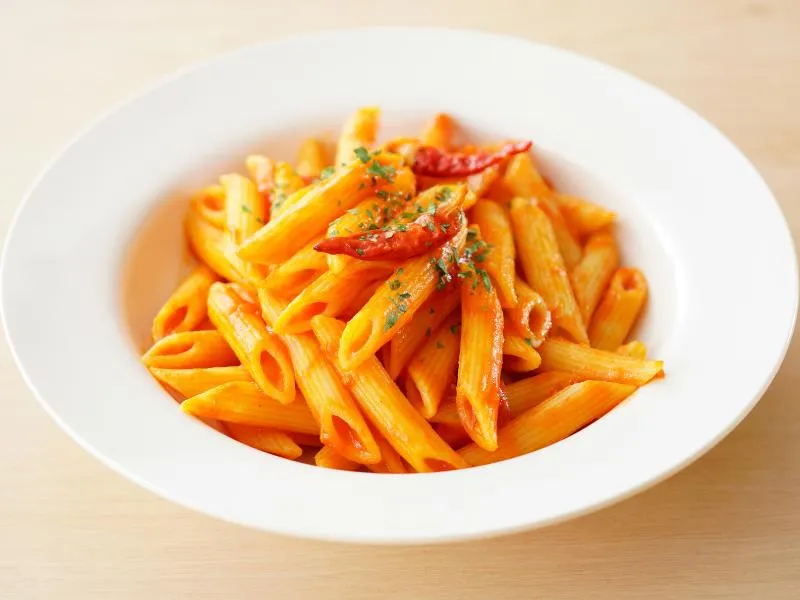Penne all’Arrabbiata
Spicy tomato sauce with garlic, red chili peppers, and olive oil tossed with al dente penne pasta.
👉 View Authentic Recipe 👈
About This Dish
Penne all’Arrabbiata is a fiery pasta dish originating from Rome in the Lazio region of Italy. The name “arrabbiata” translates to “angry” in Italian, aptly describing the heat from the red chili peppers that characterize this simple yet bold sauce. Dating back to the mid-20th century, this dish exemplifies Roman cuisine’s straightforward approach to pasta, relying on few but high-quality ingredients.
The authentic preparation requires just five key ingredients: penne pasta, fresh tomatoes (or high-quality canned tomatoes), garlic, dried red chili peppers (peperoncino), and extra virgin olive oil. Unlike many Italian pasta dishes, Penne all’Arrabbiata traditionally contains no onions, herbs beyond a sprinkle of parsley, or cheese, allowing the purity of the spicy tomato flavor to shine.
Traditionally served as a quick weeknight meal rather than a Sunday feast, Arrabbiata sauce represents the practical side of Italian cooking. Its popularity grew during the economic boom of the 1950s and 60s when Romans sought satisfying yet economical dishes that could be prepared quickly after work, earning it a permanent place in the pantheon of classic Roman pasta dishes alongside Carbonara, Cacio e Pepe, and Amatriciana.
🧑🍳 Analyzed by CucinaBot
Why This Dish Works
Penne all’Arrabbiata achieves culinary balance through contrasting elements: the capsaicin in chile peppers activates pain receptors while releasing endorphins, creating a pleasurable heat sensation. The acidity of tomatoes cuts through this heat, while the fat from olive oil carries flavors and smooths the experience. The tubular shape of penne perfectly captures the sauce both inside and outside, ensuring every bite delivers a consistent flavor profile.
Key Success Factors
- Chili Pepper Infusion: Properly infusing the olive oil with chili peppers before adding tomatoes creates depth of heat throughout the dish
- Al Dente Pasta: Cooking the penne for exactly 1-2 minutes less than package directions ensures it maintains structure against the acidic sauce
- Sauce Consistency: The sauce should cling to the pasta without being overly reduced or watery
- Heat Balance: The dish should deliver noticeable heat without overwhelming the tomato flavor
Common Pitfalls
Many non-authentic versions overcomplicate this dish by adding unnecessary ingredients like bell peppers, basil, oregano, or excessive amounts of cheese. The most common mistake is taming the characteristic heat by using too few chili peppers or drowning the dish in cheese, which fundamentally changes its identity from an “angry” sauce to a merely warm one.
How to Judge Authenticity
When reviewing recipes, look for these markers of authenticity:
- Uses dried red chili peppers (peperoncino) rather than red pepper flakes or fresh chilis
- Contains minimal ingredients (tomatoes, garlic, chili, olive oil, salt)
- Excludes herbs beyond an optional garnish of fresh parsley
- Does not include onions in the base
- Specifies that cheese (if included) is optional and added at the table, not incorporated into the sauce